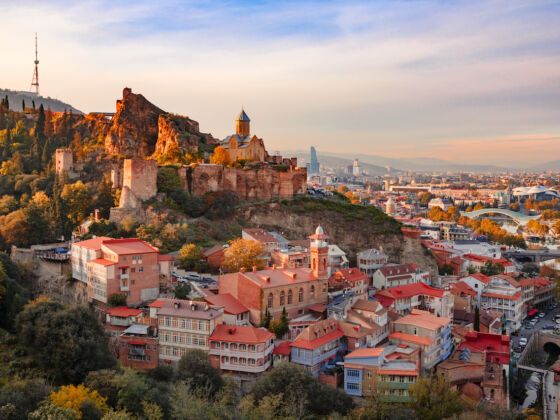Morning
Wake up early and take the metro to Freedom Square. Navigate the underground walkway until you come out at Pushkin Street. The road links into Baratashvili Street as you continue downhill, and you’ll arrive at the crumbling, old city wall topped with a circular gallery of balconies. Follow the stones of the wall until the smell of coffee at Konka Station, an abandoned tram car converted into a cafe, tempts you in to refuel. Their Turkish coffee is short and sweet, and costs 3 lari (1.50€).
